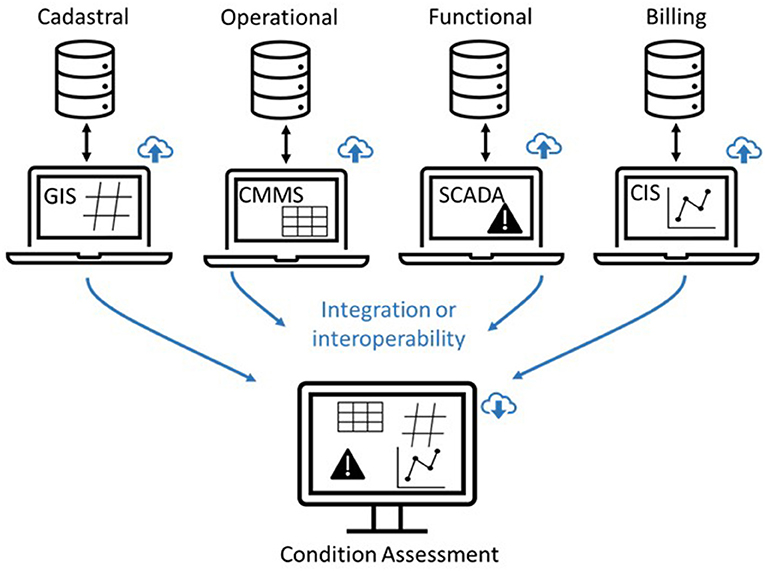Difference between revisions of "Template:Article of the week"
Shawndouglas (talk | contribs) (Updated article of the week text) |
Shawndouglas (talk | contribs) (Updated article of the week text) |
||
| Line 1: | Line 1: | ||
<div style="float: left; margin: 0.5em 0.9em 0.4em 0em;">[[File:Fig1 | <div style="float: left; margin: 0.5em 0.9em 0.4em 0em;">[[File:Fig1 Carriço FrontWater2021 3.jpg|240px]]</div> | ||
'''"[[Journal: | '''"[[Journal:Data and information systems management for urban water infrastructure condition assessment|Data and information systems management for urban water infrastructure condition assessment]]"''' | ||
Most of the urban water infrastructure around the world was built several decades ago and nowadays they are deteriorated. As such, the assets that constitute these infrastructures need to be updated or replaced. Since most of the assets are buried, water utilities face the challenge of deciding where, when, and how to update or replace those assets. Condition assessment is a vital component of any planned update and replacement activities and is mostly based on the data collected from the managed networks. This collected data needs to be organized and managed in order to be transformed into useful [[information]]. Nonetheless, the large amount of assets and data involved makes data and [[information management]] a challenging task for water utilities, especially those with as lower digital maturity level. This paper highlights the importance of data and information systems' management for urban water infrastructure condition assessment based on the authors' experiences. ('''[[Journal:Data and information systems management for urban water infrastructure condition assessment|Full article...]]''')<br /> | |||
<br /> | <br /> | ||
''Recently featured'': | ''Recently featured'': | ||
{{flowlist | | {{flowlist | | ||
* [[Journal:Diagnostic informatics: The role of digital health in diagnostic stewardship and the achievement of excellence, safety, and value|Diagnostic informatics: The role of digital health in diagnostic stewardship and the achievement of excellence, safety, and value]] | |||
* [[Journal:Development and implementation of an LIS-based validation system for autoverification toward zero defects in the automated reporting of laboratory test results|Development and implementation of an LIS-based validation system for autoverification toward zero defects in the automated reporting of laboratory test results]] | * [[Journal:Development and implementation of an LIS-based validation system for autoverification toward zero defects in the automated reporting of laboratory test results|Development and implementation of an LIS-based validation system for autoverification toward zero defects in the automated reporting of laboratory test results]] | ||
* [[Journal:Emerging and established trends to support secure health information exchange|Emerging and established trends to support secure health information exchange]] | * [[Journal:Emerging and established trends to support secure health information exchange|Emerging and established trends to support secure health information exchange]] | ||
}} | }} | ||
Revision as of 15:17, 11 April 2022
"Data and information systems management for urban water infrastructure condition assessment"
Most of the urban water infrastructure around the world was built several decades ago and nowadays they are deteriorated. As such, the assets that constitute these infrastructures need to be updated or replaced. Since most of the assets are buried, water utilities face the challenge of deciding where, when, and how to update or replace those assets. Condition assessment is a vital component of any planned update and replacement activities and is mostly based on the data collected from the managed networks. This collected data needs to be organized and managed in order to be transformed into useful information. Nonetheless, the large amount of assets and data involved makes data and information management a challenging task for water utilities, especially those with as lower digital maturity level. This paper highlights the importance of data and information systems' management for urban water infrastructure condition assessment based on the authors' experiences. (Full article...)
Recently featured:
- Diagnostic informatics: The role of digital health in diagnostic stewardship and the achievement of excellence, safety, and value
- Development and implementation of an LIS-based validation system for autoverification toward zero defects in the automated reporting of laboratory test results
- Emerging and established trends to support secure health information exchange










